Millions of people believe diversity is beneficial because it enhances creativity and innovation by bringing together unique viewpoints, improves problem-solving with multiple perspectives, and offers better financial performance for businesses with diverse workforces. Diversity also fosters a broader understanding and appreciation of different cultures, leading to personal growth. Additionally, it reflects the reality of globalization and demographic changes. However, not everyone agrees, as some see diversity as a threat to social cohesion and cultural identity, potentially leading to economic insecurity and other security concerns. A balanced approach that promotes both diversity and integration, emphasizing shared values, can bridge the gap between these differing perspectives. Examples include countries like Canada and Singapore, which successfully manage diversity while maintaining social harmony.
DIVERSITY AS AN ASSET IN WINE ENJOYMENT
We are strong supporters of diversity in the world of wine, as embracing diversity in wine can lead to a more rewarding and comprehensive appreciation of this timeless beverage; it enhances taste profiles by offering a wide range of flavors, aromas, and textures from different grape varieties and terroirs. This broadens wine pairing possibilities, allowing for better matches with various cuisines and promoting cultural integration. The educational and experiential enrichment gained from tasting diverse wines helps enthusiasts understand winemaking techniques, regional histories, and cultural practices, refining their palates. Economic and social benefits arise from supporting local economies and fostering cultural exchange. Moreover, diversity drives innovation and creativity in winemaking, leading to unique and experimental blends. This also makes vineyards more resilient to environmental changes, ensuring a stable supply of wine varieties.
THE DIVERSITY OF SHERRY WINES
The sherry region in Spain is one of the most unique and complex wine-growing areas in the world. This distinction originates from several factors, including its history, climate, soils, grape varieties, and winemaking techniques. Here’s a summary of what makes this region so special and diverse:
HISTORICAL SIGNIFICANCE: THE WINES AND THE SHERRY REGION
The history of sherry production dates back to at least the Phoenician era, around 1100 BC. This long tradition has allowed for the development of intricate winemaking techniques and a deep understanding of the local terroir. Over the centuries, various cultures, including the Romans, Moors, and later the British, have influenced sherry production, contributing to its diverse styles and flavors.
Get to know the origins of the word “sherry” here.
CHARACTERISTICS THAT MAKE SHERRY WINES UNIQUE
“El Marco de Jerez” formed by the 10 different towns including Jerez de la Frontera, Sanlúcar de Barrameda, and El Puerto de Santa María, enjoys a unique climate, benefiting from the cooling effects of the Atlantic Ocean. However, each single location experiences its own weather patterns, contributing to a complex array of profiles.
The region’s distinctive and varied white albariza soils, composed of chalk, clay, and sand, also contribute to the unique flavor nuances of sherry wines.
The primary grape used for most sherry styles, particularly fino and manzanilla, is palomino, which thrives in the albariza soil and produces wines with delicate flavors and aromas. pedro ximénez (PX) grapes are often dried in the sun to concentrate their sugars, resulting in rich, velvety wines with notes of dried fruit and caramel, while moscatel adds aromatic complexity and floral notes.
Fino, manzanilla, and [partly] amontillado undergo biological aging under a layer of yeast called “flor”, which imparts unique nutty and saline characteristics to the wine. Other sherries, such as oloroso, undergo full oxidative aging without flor, resulting in richer, darker wines with flavors of dried fruits, nuts, and spices.
The diversity of sherry styles ranges from the light, dry, and crisp fino and manzanilla, which are perfect aperitifs, to amontillado, which offers a balance of biological and oxidative aging characteristics, to the fully oxidized oloroso, which is dark, rich, and full-bodied. Sweet and luscious Pedro Ximénez and Moscatel sherries add depth to desserts, and the popular Blends represent the perfect combination of sweet and dry styles, all showcasing the rich heritage and versatility of sherry production.

SPECIALTY SHERRY WINES: LUSTAU’S UNIQUE SELECTIONS
Among all sherry producers, Lustau stands out for offering the broadest collection of fine products, going far beyond the standard styles to explore obscure and innovative profiles. This contributes to the unparalleled complexity that defines the region. Today, we present some of these unique expressions and the reasons behind their cultural and commercial interest. Please enjoy the singularity of each of the five releases below and, as always, let us know your opinion:
LUSTAU 3 EN RAMA: THE PUREST TOUR AROUND THE JEREZ AREA
Lustau uniquely offers a range of three “En Rama” wines from the historic Sherry Triangle, highlighting each town’s character: Jerez de la Frontera, El Puerto de Santa María, and Sanlúcar de Barrameda. This innovative range allows sherry aficionados to explore and appreciate the profound influence of local microclimates on the wines, unveiling the distinctive character inherent to each town. The impact of these microclimates is not merely superficial; it is integral to the identity of each wine. The variations in temperature, humidity, and air currents in each location foster distinct biological aging processes under the flor, leading to the development of unique aromas, flavors, and textures. Lustau’s 3 En Rama wines offer a sensory journey through the Jerez territory, revealing the interplay of environment and tradition.
Esteemed cellar master Sergio Martínez selects the finest casks for this series. Bottled directly from the cask without treatment, these wines capture their purest essence. This process occurs in spring when the “flor”, a living yeast layer, is at its peak, embodying the wine’s natural character.
Here are the three wines from the Saca Spring 2024 (500ml), enjoy them chilled (7-9C/ 44-48F):
• Manzanilla: Sanlúcar de Barrameda sits on the estuary of the Guadalquivir River with Atlantic breezes coming off the ocean. Its microclimate impregnates the yeasts growing on the surface of the wines with a rare sea salt character. Selected for its delicacy, this Manzanilla is aged under flor in American oak casks for 5 years and bottled without any treatment. Lemon yellow color with golden reflections. Fresh, briny, and pungent on the nose. Notes of chamomile, fennel, and roasted almonds are laced with subtle, delicate soy and herbaceous nuances. Light and crisp on the palate, showing a bitter and nutty aftertaste. Try it with oysters or seabass ceviche.
Meet the 3 en Rama Manzanilla Saca 2024.
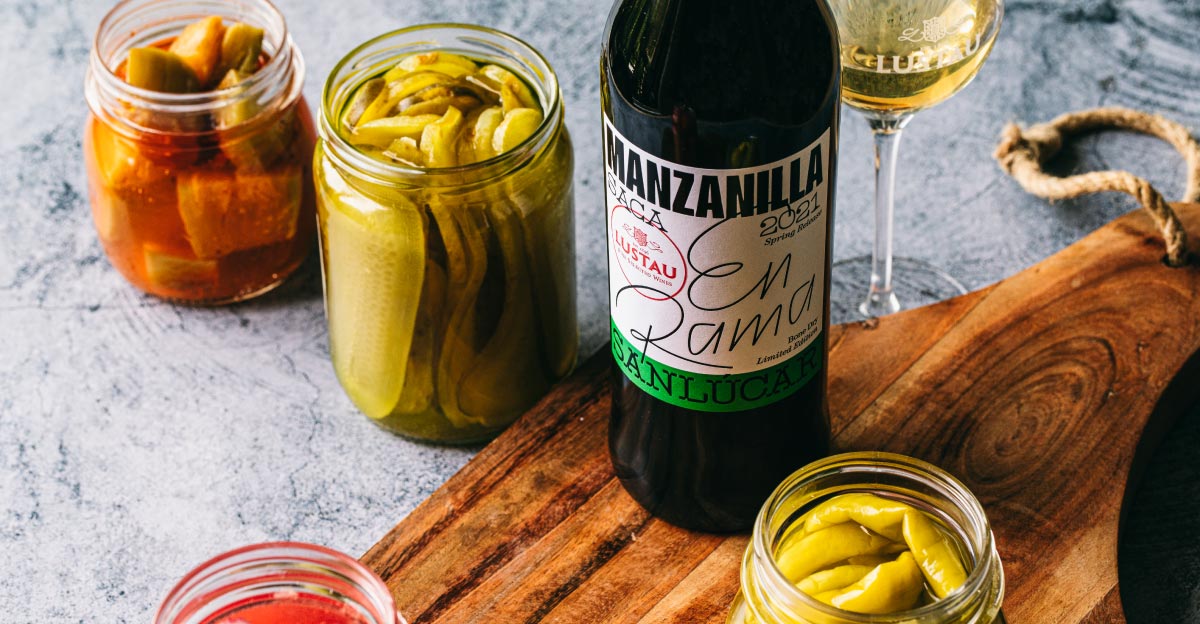
• Fino del Puerto: The coastal town of El Puerto de Santa María enjoys mild weather all year round. This has a crucial influence on finos aged therein since the flor grows in ideal environmental conditions. This wine, selected for its typicity and genuineness, is aged under flor in American oak casks for 5 years and bottled without any treatment. Intense yellow color with golden hues. Very pungent and lively with notes reminiscent of the Atlantic Ocean, roasted almonds, and hay. Bone dry and briny on the palate. Long and bitter aftertaste, characteristic of the classic fino from El Puerto. Try it with salmon sashimi or red tuna tartar.
Meet the 3 en Rama Fino del Puerto Saca 2024.
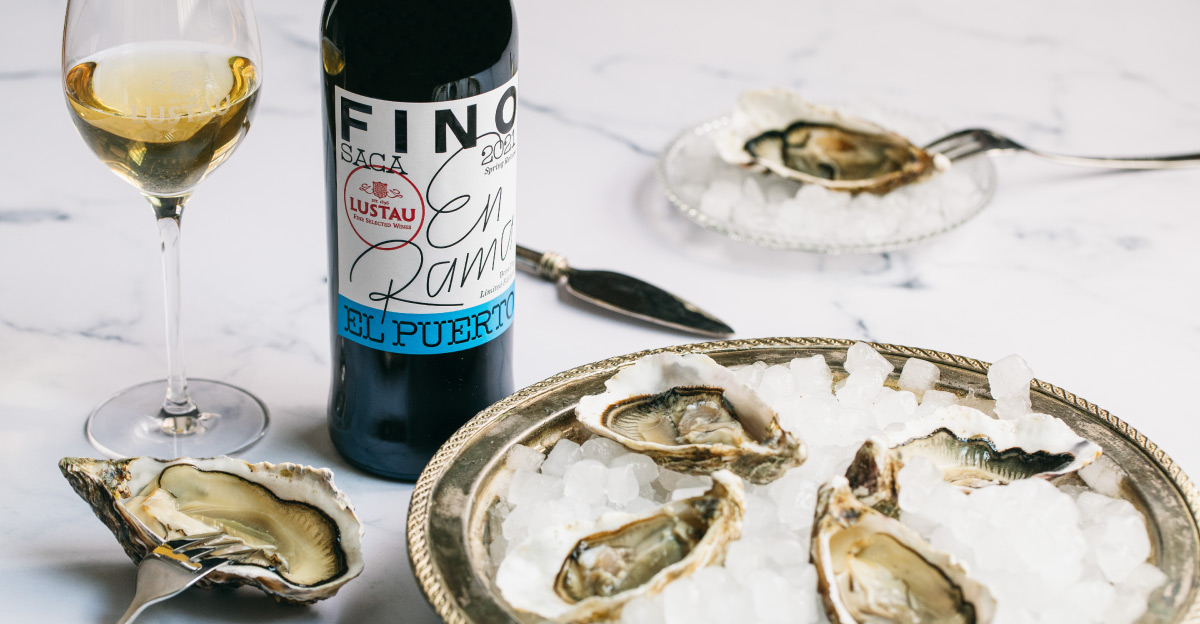
• Fino de Jerez: Jerez de la Frontera has an important influence on the development of the finos from this area. Its long, hot summers and mild but wet winters provide a more rounded and fuller style of wine. This fino, aged under flor in American oak casks for 4 years, was selected for its finesse and bottled without any additional treatment. Intense golden color with amber reflections. Pungent and intense on the nose. Yeast, white bread, chalk, and butter nuances. Structured, classy, and salty on the palate, with a mineral and nutty aftertaste. Try it with Iberian ham or steak tartar.
Meet the 3 en Rama Fino de Jerez Saca 2024.
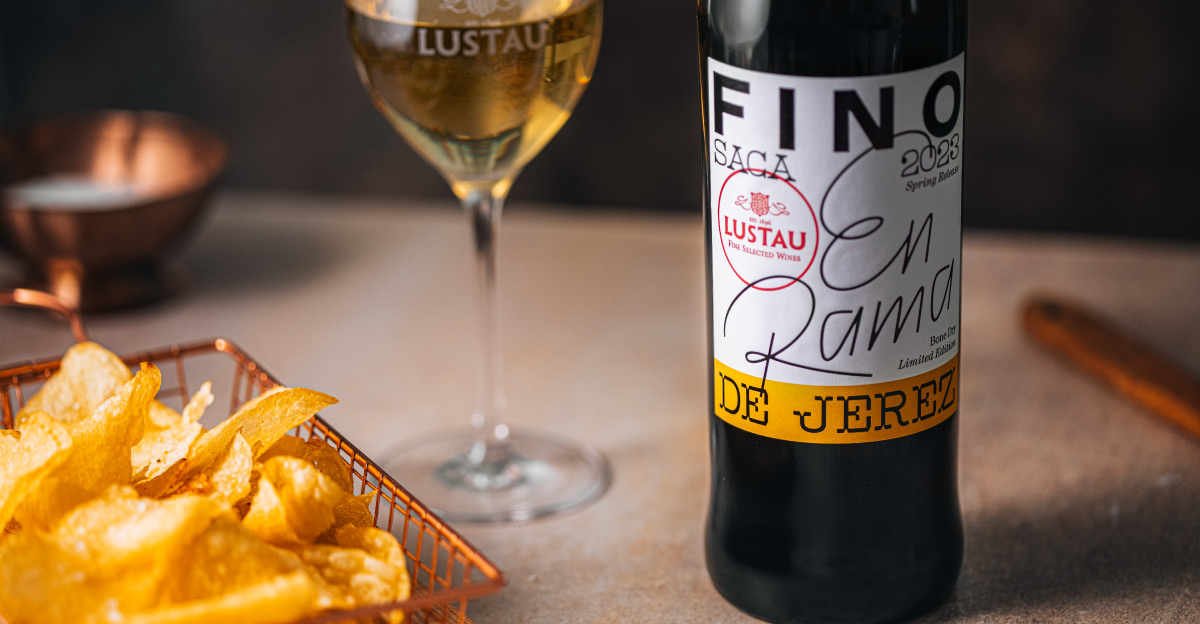
AMONTILLADO DEL CASTILLO ANTONIO CABALLERO Y SOBRINOS: INVERTED SOLERA SYSTEM
“Almacenistas” are independent sherry makers producing and aging small batches, often sold to large commercial sherry brands. Lustau, founded in 1896, began as an almacenista and finally became a Sherry House in the 1950s. Years later, Lustau led the almacenista revolution by bottling and selling unblended wines.
Antonio Caballero ran a brandy distillery in El Puerto de Santa María from the late 18th century. His nephew, Rafael, took over in the 1960s, making it a renowned tourist spot located in the historic Castle of San Marcos. This castle, initially a Roman church and later a Muslim mosque, was built by Alfonso X, “the Wise”, after recovering the city during the Christian reconquest highlighting the region’s diverse history. It houses a chapel dedicated to “Our Lady of Miracles” and was once visited by Christopher Columbus. This blend of history and culture makes it a magical place to enjoy sherry wines.
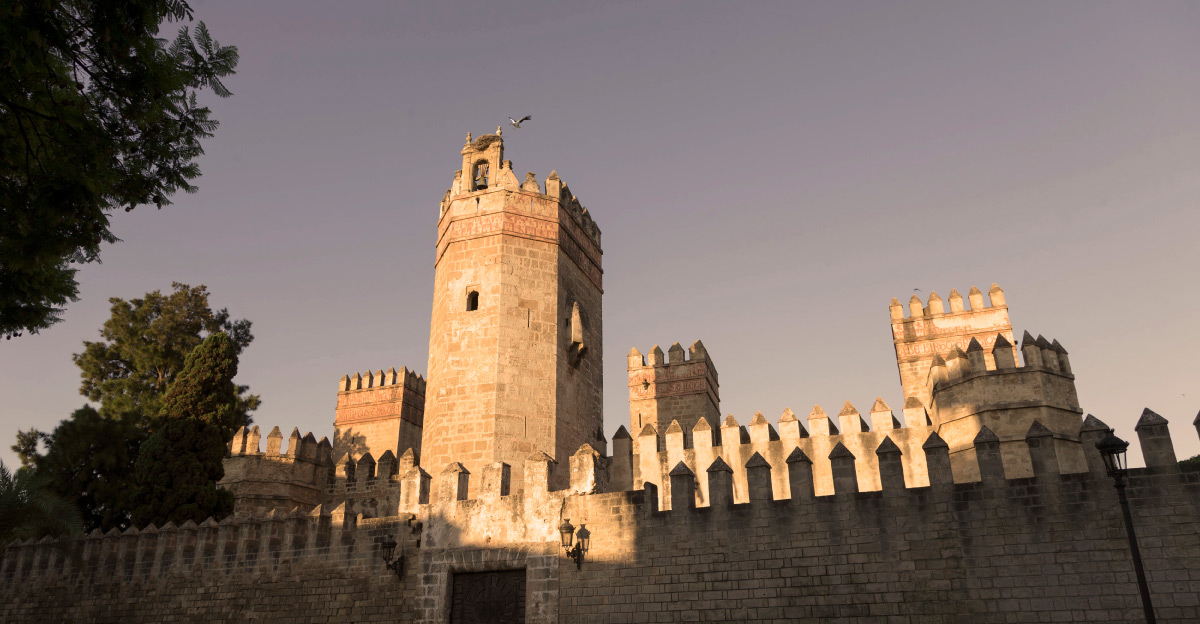
Adding to the uniqueness of this Amontillado del Castillo is its singular aging approach. In this case, the solera system where it develops is somewhat inverted. The 2nd Criadera is located at ground level, whereas the group of barrels that form the Solera (containing the oldest wines in the system) are placed on the very top, above the 1st Criadera which remains in between the other two. This new arrangement alters the traditional system by modifying the rates of development: the youngest wines (in the 2nd Criadera) benefit from the cooler, lower-level conditions, extending their youthful qualities over time, while the older wines above, exposed to slightly higher temperatures, accelerate their evolution; for wines aged over long periods, especially in amontillados, where biological aging is crucial to enjoy that blend of personalities, inverting the solera system allows for balancing the two sides of an amontillado. The freshness, liveliness, dryness, and vibrance of biologically aged wines will remain present in the wine despite much longer oxidative aging.
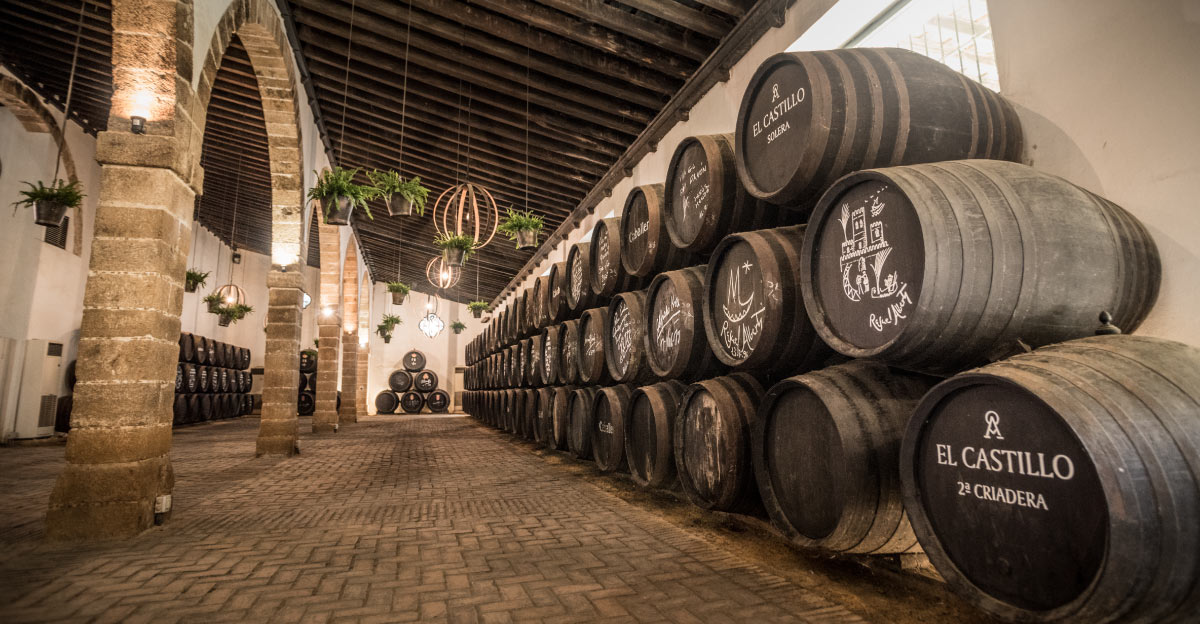
This exclusive solera of amontillado consists of 38 casks. It is aged for an average period of 18 years, in the cellars of the castle. Beautiful bright amber color with coppery reflections. This wine shows aromas of hazelnut praline and candied orange zest with nuances of furniture polish and smoked wood in the background, as evidence of its great age. Dry, pungent, and flavorsome, with a refreshing acidity. Enormously nutty with a delicious salty spiced touch and an extremely long aftertaste. Serve at 13-14C /55-57F as an apéritif or to accompany dishes such as consommés, foie-gras, cold and smoked meats, or a cheeseboard.
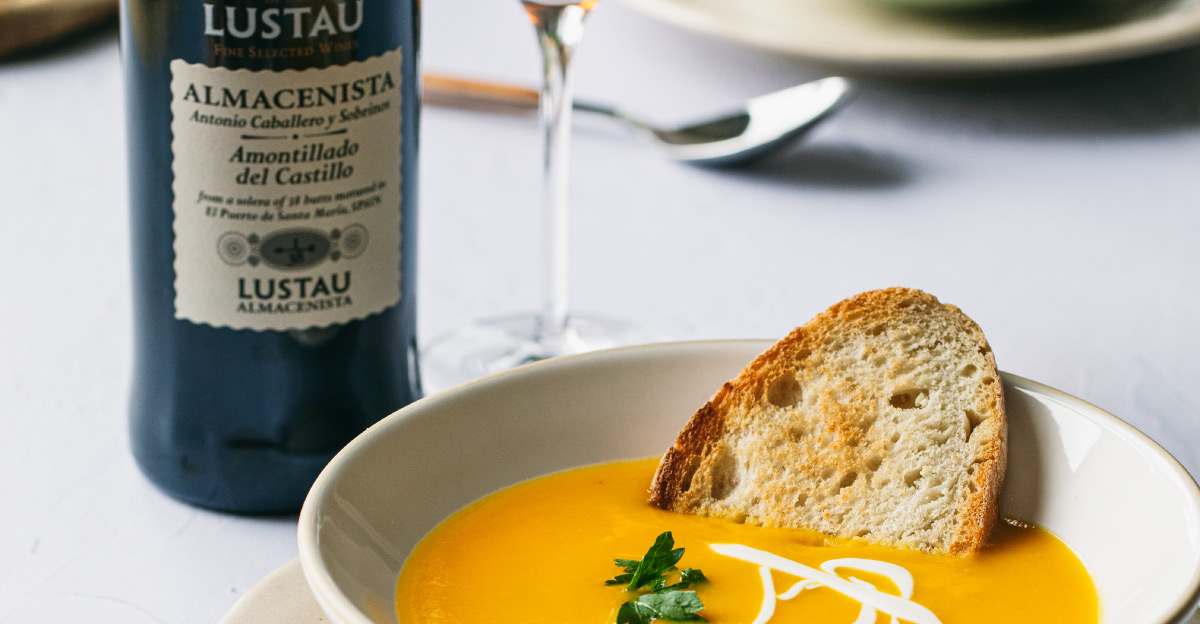
Meet Lustau Almacenista Antonio Caballero y Snos. Amontillado del Castillo
EAST INDIA SOLERA: A TRIP TO THE PAST
East India Solera is a style known as “Cream.” It is a sweet wine made from a blend of oloroso and Pedro Ximénez (a dry wine and a very sweet wine). The name of this wine comes from a popular style of Jerez wine in the 17th century, coinciding with English maritime dominance. As a fortified wine (which lasted longer), sherry was taken along as ballast and to serve the ship’s crew on its transatlantic journey. This style was called East India because these wine batches were specially reserved for trade with the East India Company, a British trading company that transported cotton, silk, spices, tea, saltpeter, and other commodities from the Far East. Back then, they started to notice that the wine improved after such a trip, becoming smoother and more complex. This can be explained by the constant movement (i.e. more interaction with air and wood) and by the exposure to high temperatures.
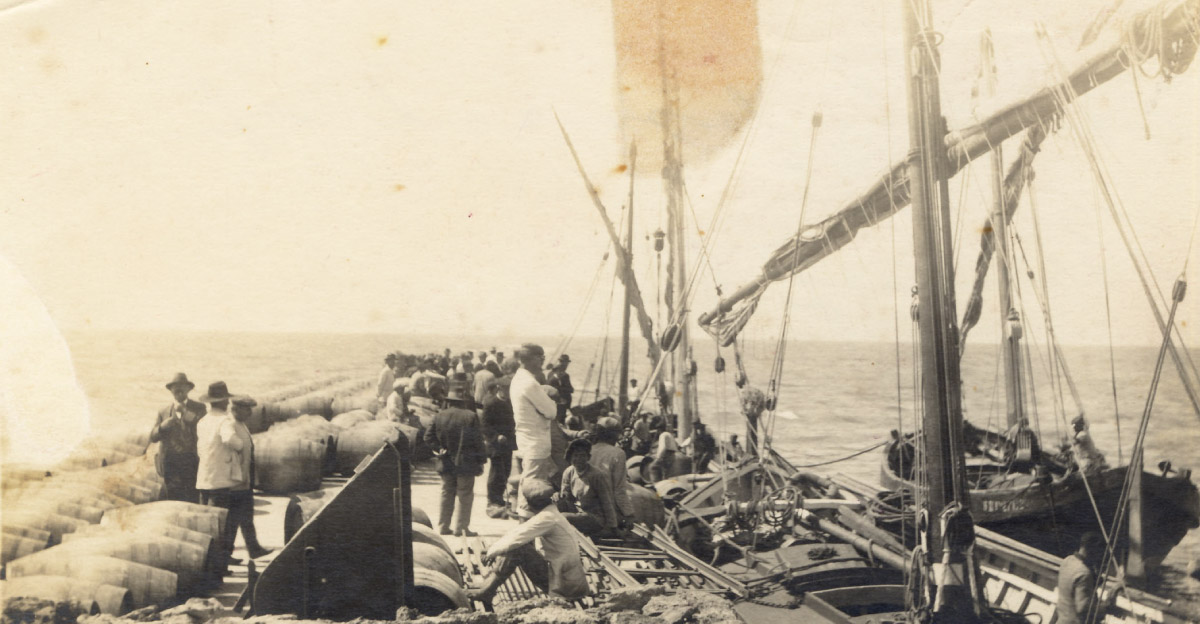
With the style having completely disappeared, Lustau revived the name and concept of these colonial wines by blending 80% oloroso and 20% pedro ximénez that have aged separately for about 12 years. These are then further matured in a 45-cask solera for three more years, in a specific part of the bodega that is slightly hotter and more humid than the rest of the building complex. This process aims to emulate the conditions found in the hull of those ancient vessels crossing the tropical seas refining their bouquet and taste. The result is a sweet wine that pays homage to those 18-19th Century wines. East India Solera doesn’t have a real label. Instead, the name is printed on the bottle, similar to the casks and fortified wine bottles of that era.
Dark mahogany in color with a green-amber edge. It offers vibrant notes of maple syrup, brown sugar, shoe polish, and raisin, all very well-integrated. On the palate it is smooth and rich at the beginning, full of prune and burned orange peel flavors. Serve at 10-12C /50-54F/. This wine is a perfect companion to light desserts, creamy cheeses, or foie gras. Try it also on the rocks with a slice of orange.
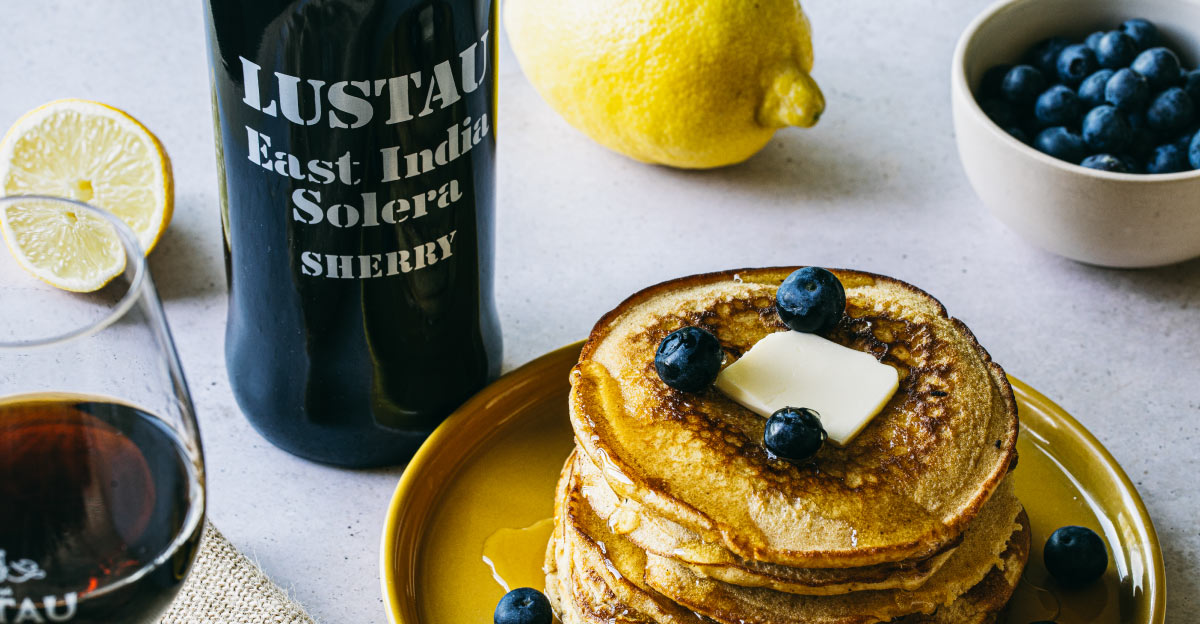
OLOROSO EMPERATRIZ EUGENIA: ASTONISHING HERITAGE
This oloroso is one of the flagship wines of the winery launched in 1921 by Emilio Lustau Ortega, in commemoration of the last visit made by María Eugenia Palafox Portocarrero y Kirkpatrick, the last Empress of France (known as Eugenia de Montijo). She was born in Granada and married Napoleon III on January 30, 1853. María Eugenia played a significant role in French politics during her husband’s reign, often acting as regent during his absences. She was known for her influence on foreign policy and her contributions to various charitable causes.
Originally, the Emperatriz Eugenia brand was not an oloroso wine but a brandy de Jerez. Interestingly, the brand has adapted and become ingrained in the winery’s ideology, even though the product has changed over the years. This wine is aged in a winery from the late 19th century, which has a unique style within the DO (Denomination of Origin) and is named after the empress.
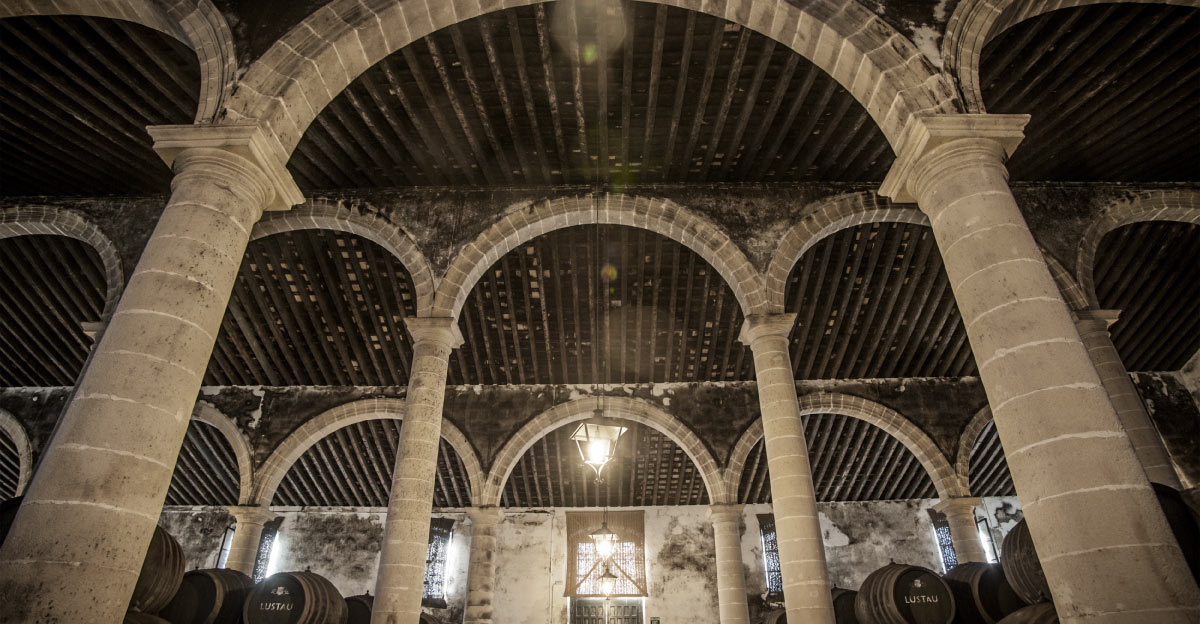
Dark gold in color with khaki hues. Penetrating aromas of noble woods, varnish, and nuts with a great concentration. A rich and mellow wine, with immense flavors of smoky wood, prunes, and bitter chocolate. Complex and ample on the palate, smooth and warming with a lingering aftertaste. Serve at 13-14C /55-57F/. This wine accompanies red and smoked meats, game, mature cheeses, and spicy Asian dishes, and may also be served as a digestive.
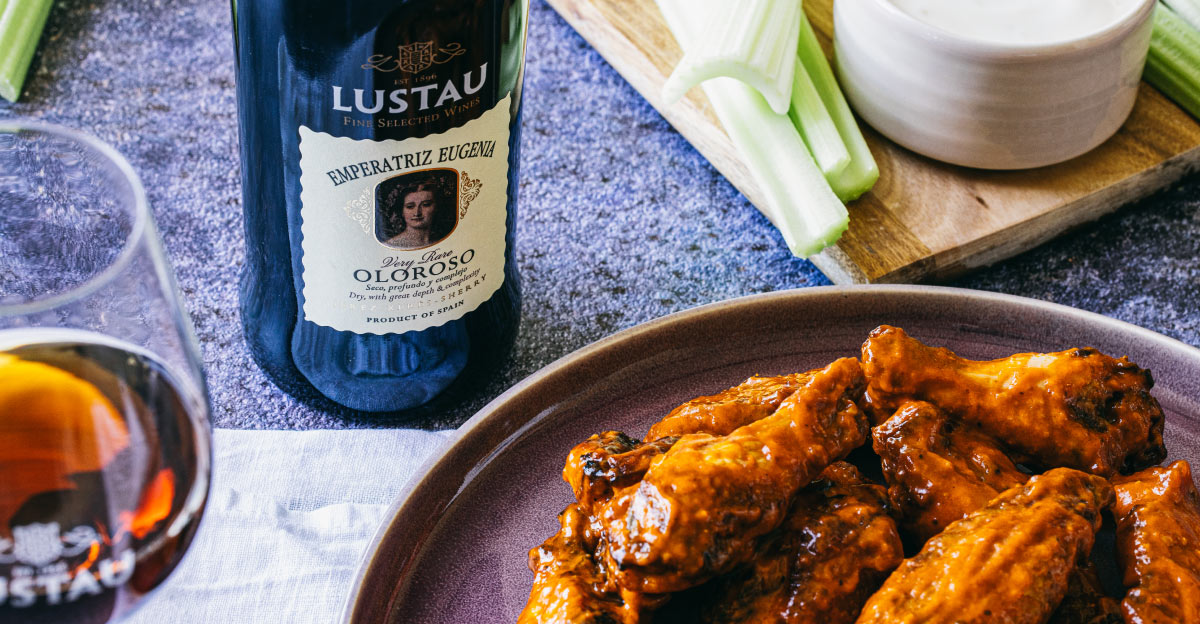
Meet Lustau Rare Oloroso Emperatriz Eugenia
LUSTAU AÑADA (VINTAGE) 2003: THE RAREST SHERRY OUT THERE?
Vintage sherry or Jerez de Añada is extremely rare, so rare that a lot of introductions to sherry wines will simply omit it. The solera system is essential to sherry and accounts for the vast majority of production, but vintages do exist. In fact, before the invention and development of the solera principle in the second half of the 18th century, all sherry was created as a vintage wine, and the añada concept was still widely in use until the early 20th century.
Since 1989 the House of Lustau has been producing sweet wines from 100% palomino grapes, and extremely rare practice. Although in the past, the sweet vinification of palomino was not uncommon, Lustau was the first to revive the idea at some point, and it is still the only producer offering this kind of wine. Nowadays, they belong to the “dulce” category of naturally sweet wines, known in the past as “oloroso abocado”. The first of these añada sherry wines was released in 2003. From every vintage they set aside around 10 casks, a number that gradually diminishes as they age. They are released when deemed ready, usually between 15 and 20 years but, in some cases, after much longer periods.
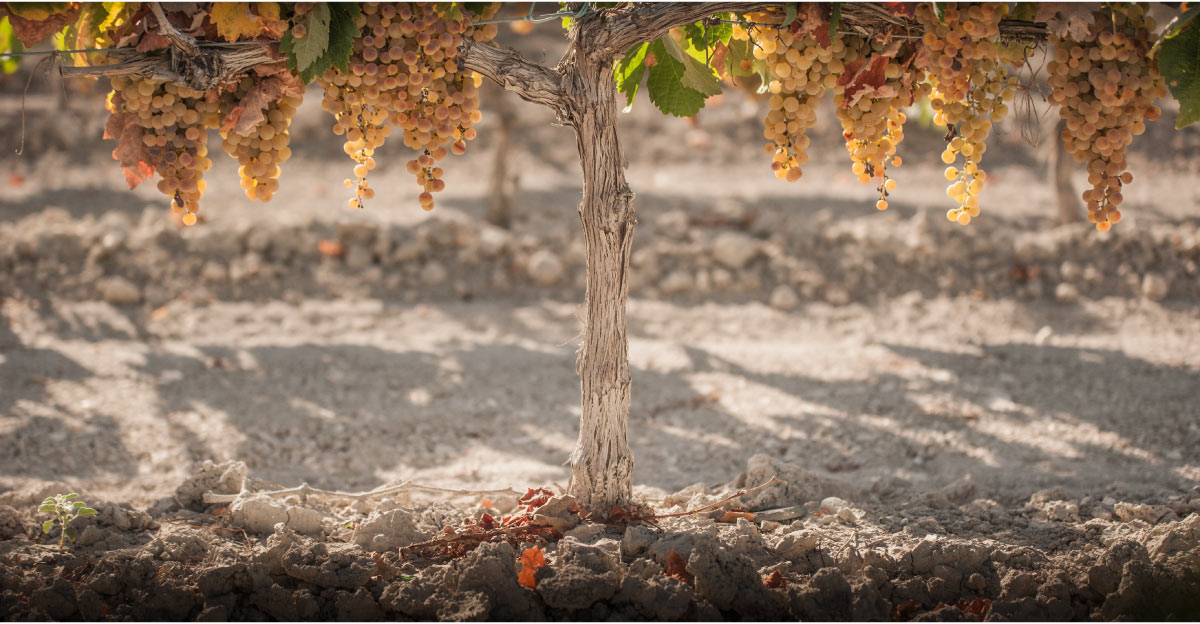
Take the 2003 Añada in particular, the wine matured for 19 years in ex-oloroso casks following static, oxidative aging. The 3.636 bottles were released in Spring 2022 when the wine reached its peak. Intense mahogany color with golden reflections. Enormously aromatic and fragrant, with profound maroon glace, dry apricot, and candied fruit notes over a toasted background. Slightly sweet and silky on the palate, with a high and excellent acidity. Candied orange peel, vanilla, smoky wood, cookie dough, and praline nuances persist in a remarkably long, and outstandingly balanced finish. Serve at 10-12C /50-54F/. This is a superb wine to accompany foie gras, light desserts, cakes, soft cheeses, or even Roastbeef!







